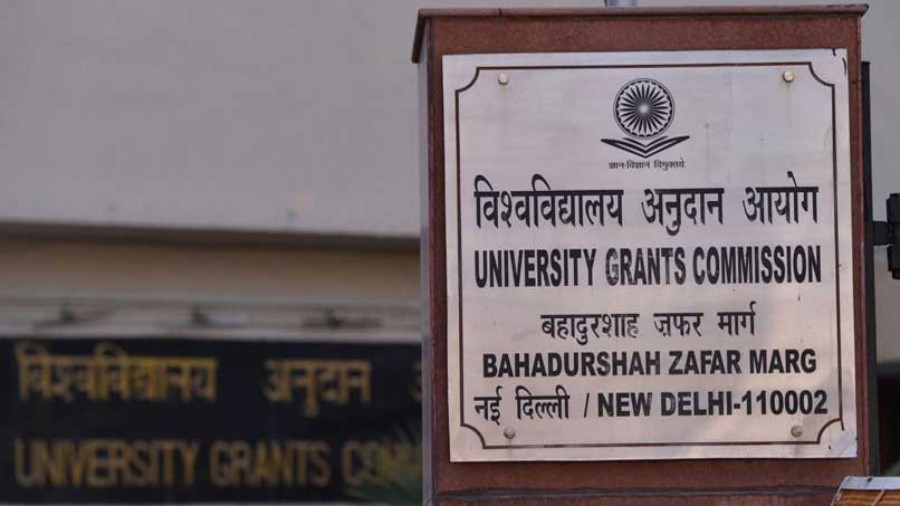The government has overruled concerns expressed by centrally funded minority institutions and said they too must admit undergraduate students through the all-India entrance test to be launched from this year.
However, University Grants Commission chairperson M. Jagadesh Kumar has clarified that minority institutions and some others like Visva-Bharati can continue to follow their own reservation policies even after adopting the Common University Entrance Test (CUET).
All central universities and affiliated colleges have
to admit undergraduate students through the CUET while state and private universities can take their own call in the matter, the Centre has said.
Sources said that representatives of the Jamia Millia Islamia and Aligarh Muslim University (AMU) — minority institutions that now have their own admission procedures and reservation policies — had expressed concern that having to adopt the CUET would curb their academic freedom.
Asked about this on Monday, Kumar told reporters: “The CUET is compulsory for central universities. It is much better for students to write the CUET and get admission.”
The decision comes at a time both Jamia and AMU are having to defend their minority status in court, where the Narendra Modi government has opposed these institutions’ stand.
Currently, most colleges and universities admit undergraduate students on the basis of their Class XII scores, a process complicated by the different school boards adopting different levels of generosity in awarding marks.
The CUET is expected to solve this problem, but its adoption of a single syllabus — that of the NCERT, Kumar said — could disadvantage students from boards that have their own Class XII curriculum.
Some central universities, including some minority institutions, hold their own entrance tests.
AMU became a university in 1920 through the AMU Act. In 1967, the Supreme Court held it not to be a minority institution but in 1981, the Indira Gandhi government amended the act to restore the minority status.
In 2006, Allahabad High Court struck down the 1981 amendment. AMU, the then UPA government and the AMU Old Boys Association challenged the ruling in the Supreme Court. The case is pending but the apex court has allowed the university to continue its 50 per cent reservation in higher courses for students passing out from its constituent schools and departments.
Jamia Millia, set up in 1920 during the Khilafat movement, became a central university in 1988. In 2011, the National Commission for Minority Educational Institutions (NCMEI), a quasi-judicial body, declared it a minority institution.
Since then, the university has been reserving 50 per cent of its seats for Muslims. However, the NCMEI decision has been challenged in Delhi High Court.
Delhi University-affiliated St Stephen’s College, set up in 1881 by Christian Missionaries and now under the administrative control of the Church of North India, too is a minority institution and reserves half its seats for Christians.
Visva-Bharati, which is not a minority institution, too reserves a proportion of its seats for those passing out of the two schools on its campus.
“The ‘minority’ institutions can continue their reservation (policy even after joining CUET). Visva-Bharati will continue its internal quota,” Kumar said.
In a written reply to the Lok Sabha on Monday, junior education minister Subhas Sarkar said the CUET would be conducted in 13 languages: English, Hindi, Assamese, Bengali, Gujarati, Kannada, Marathi, Malayalam, Odia, Punjabi, Tamil, Telugu and Urdu.
The test will have three sections: language skills, domain paper, and general studies. A student can appear in six domain subjects to be able to apply for multiple major subjects at different universities.











